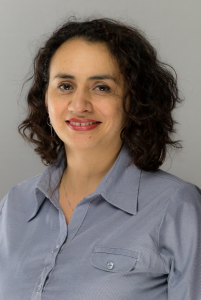Written by Jenny L. Bolivar-Medina, ITT WSU Extension, and Lee Kalcsits, Endowed Chair WSU Horticulture. June 2021. Reviewed July, 2022.
Cooling with water is a critical fruit sunburn mitigation tool in Washington state orchards. When used correctly sunburn can be substantially reduced and corresponding problems such as over saturation of soil, nutrient leaching, and other disorders can be avoided. Unlike leaves, fruit tend to overheat and can reach temperatures 18-28 °F higher than the air temperature surrounding the fruit. To mitigate the effects of heat stress, there are three orchard cooling mechanisms that can be used: Evaporative cooling (EC), Hydrocooling, and Convective Cooling, (Table 1; Figure 1). Early developing fruit is not susceptible to sunburn and cooling is not needed before late June. Fruit nearing harvest when the background color starts to turn yellow is particularly susceptible. Cooling systems need to start when air temperatures reach 85-90 °F. The effectiveness of each mechanism depends on climatic conditions, water application rates and timing, and uniformity in the application.
Table 1: General characteristics of orchard cooling mechanisms
| Action | Evaporative Cooling (EC) | Hydrocooling | Convective Cooling |
|---|---|---|---|
| Description | Application of water to leaves and fruit. | Application of water to leaves and fruit. | Application of water that evaporates before reaching leaves and fruit. |
| Cooling Effect | Via water evaporation and air movement | Water runoff | Via circulation of cool air (convection) |
| Water Application | Over-tree | Over-tree | Over- or Under-tree |
| Implementation | Water should be in contact with the organ to cool. Allow water to evaporate and apply more water (cycles of water application and evaporation) | Water should be in constant contact with the organ to cool. (Continuous water application) | Water should be applied as a mist, with very fine droplets that evaporates before reaching the organ to cool. It is not cycled but should be continuous for several hours. |
| Water Volume | Requires pulses of water at average rates equal to 30 gpm/ac (gallons per minute per acre). EC should be cycled, for example 20 minutes on and 20-40 minutes off. Cycles should not have less than 10 minutes on-times. Water must wet the fruit surface after each on-cycle |
Requires a constant water supply at 40 gpm/ac or higher. | When applied with over tree sprinklers, water application is continuous and at rates lower than 30 gpm/ac and can be as low as 5 gpm/ac. |
| To Consider | EC could replace up to 25% of total irrigation water. However, it needs to be paired with irrigation system | Soil can become oversaturated and could affect long-term health of the orchard (diseases, soil nutrition) as well as fruit quality (bitter pit, scab, blister) | It does not replace irrigation. If low-volume over tree sprinklers are used, soils can become dry. Needs to be paired with irrigation system. If under tree sprinkle systems are used, it could result in soil saturation. |

References
Evans, R. 1999. Overtree Evaporative Cooling System Design and Operation for Apples in the PNW.
Goodwin 2017. Evaporative cooing in apple and pear orchards. Fact Sheet. Agriculture Victoria.
Green, S.R., Goodwin, I., and Cornwall, D. 2014. Evaporative Cooling Effects on Tree Transpiration. In: Braun et al. Proc. VII IS on Irrigation of Horticultural Crops. Acta Hort. 1038.
Racsko, J., and Schraeder, L. 2012. Sunburn of Apple Fruit: Historical Background, Recent Advances and Future Perspectives. Critical Reviews in Plant Sciences 31(6): 455-504.
Schrader, L. et al. 2004. Stress out by sunburn? Here’s some relief. Conference paper. Washington State Horticulture Association.
Contacts
 Jenny L. Bolivar-Medina, Ph.D
Jenny L. Bolivar-Medina, Ph.D
ITT- WSU Extension- – Tree Fruit Horticulture
WSU-Irrigated Agriculture Research and Extension Center
24106 North Bunn Road
Prosser, WA 99350
phone: 509-786-9201
email: j.bolivarmedina@wsu.edu
 Lee Kalcsits
Lee Kalcsits
Associate Professor
Endowed Chair
Tree Fruit Environmental Physiology and Management
WSU Tree Fruit Research & Extension Center
Wenatchee, WA
phone: 509-293-8764
email: lee.kalcsits@wsu.edu
Treefruit.wsu.edu articles may only be republished with prior author permission © Washington State University. Republished articles with permission must include: “Originally published by Washington State Tree Fruit Extension at treefruit.wsu.edu” along with author(s) name, and a link to the original article.
